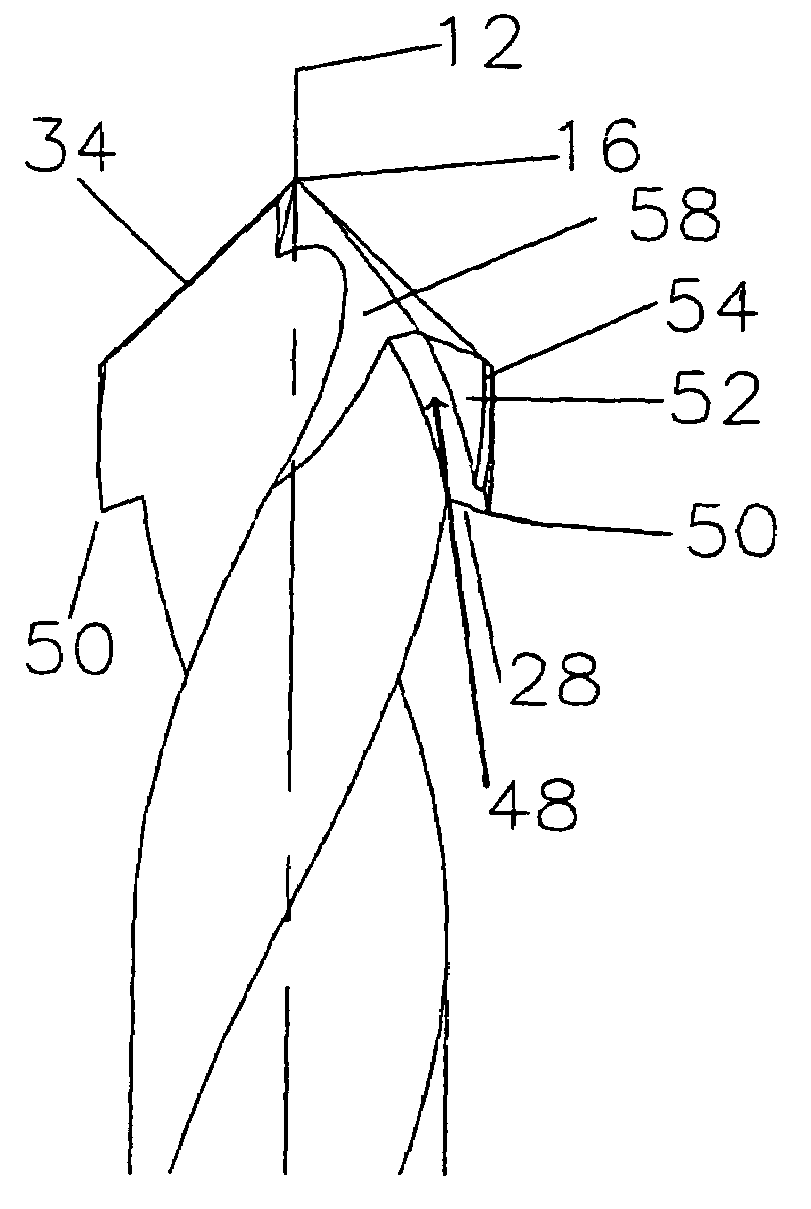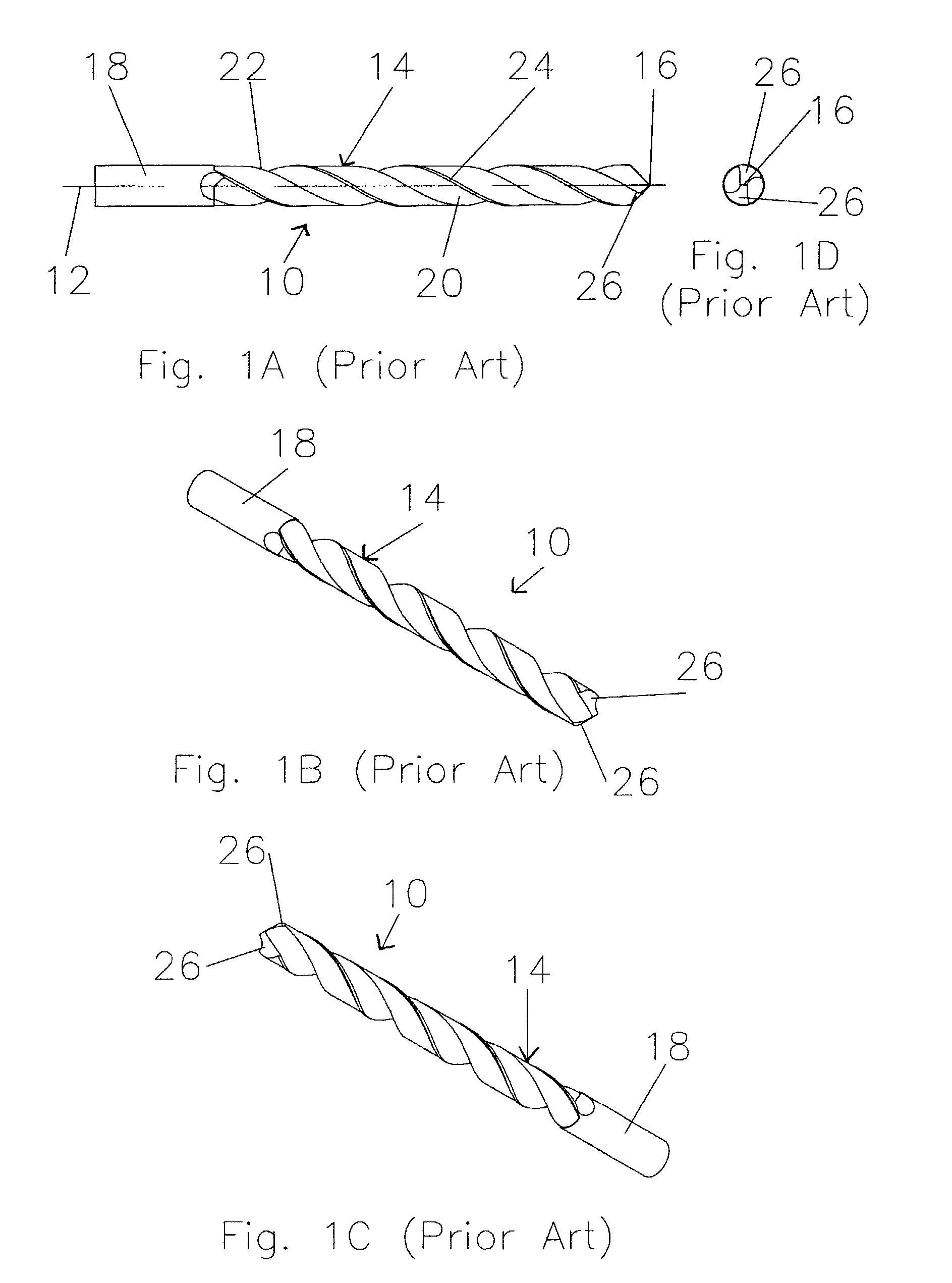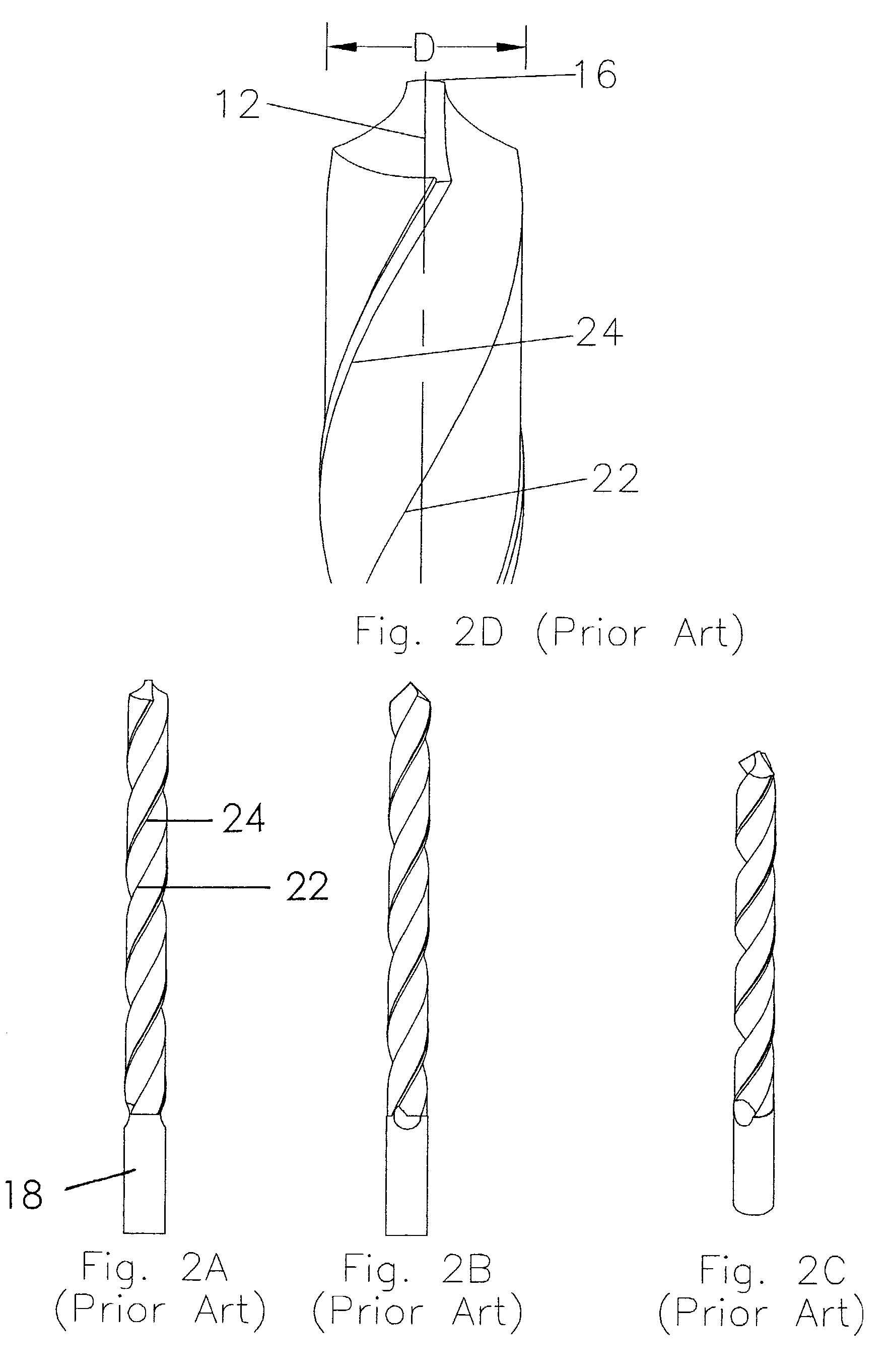Reduced energy consuming, lateral cutting twist drill
a twist drill and lateral cutting technology, applied in the direction of twist drills, manufacturing tools, wood boring tools, etc., can solve the problem that the twist drill b>10/b> is not configured to accommodate lateral cutting movement in the drilling hole, and achieve the effect of less energy and reduced friction
- Summary
- Abstract
- Description
- Claims
- Application Information
AI Technical Summary
Benefits of technology
Problems solved by technology
Method used
Image
Examples
first embodiment
[0015]With particular reference to FIGS. 3B and 3D, the unmodified portion of leading cutting edge 24 of each flute 20 is in the form of an angularly inclined cutting edge 34 and a transition portion cutting edge 36. Inclined cutting edge 34 extends from tip 16 to a termination point 38 at transition portion 30, and transition portion cutting edge 36 follows the spiral direction of flute 20 and is substantially concentric with longitudinal axis 12. Inclined cutting edge 34 is the standard leading sharpened flute edge for conventional plunge operation. FIG. 3D shows cylindrical relief 28 forming a 90 degree relief angle relative to transition portion cutting edge 36; however, other relief angles would be suitable. The radial distance between termination point 38 and longitudinal axis 12 sets the twist drill diameter. FIGS. 3A, 3B, 3C, and 3D show the invention in which the twist drill requires less energy to drill a hole. The 0.1D recess depth and 0.4D transition portion length dimen...
second embodiment
[0016]FIGS. 4A, 4B, and 4C show that a second modification process step entails providing back relief 48 of preferably about 60 degrees following the cylindrical contour of the shaft as shown. FIG. 4D, which is a 5:1 enlarged view of the work end shown in FIG. 4A, together with FIG. 5D, shows the back relief angle of 60 degrees and features it creates to enable lateral cutting movement during twist drill extraction from a work piece. In particular, back relief 48 forms a leading edge tooth 50 that enables cutting during extraction of the twist drill rotating in either a clockwise or counter-clockwise direction. Back relief 48 also provides the space required for removal of work piece material cut as the drill bit rotates in a counter-clockwise (reverse) direction during extraction. FIGS. 4A, 4B, 4C, and 4D show the invention in which the twist drill enables lateral cutting during extraction from a drilled hole in a work piece.
[0017]Leading edge tooth 50 is positioned at the bottom o...
PUM
| Property | Measurement | Unit |
|---|---|---|
| Angle | aaaaa | aaaaa |
| Diameter | aaaaa | aaaaa |
| Energy | aaaaa | aaaaa |
Abstract
Description
Claims
Application Information
 Login to View More
Login to View More - R&D
- Intellectual Property
- Life Sciences
- Materials
- Tech Scout
- Unparalleled Data Quality
- Higher Quality Content
- 60% Fewer Hallucinations
Browse by: Latest US Patents, China's latest patents, Technical Efficacy Thesaurus, Application Domain, Technology Topic, Popular Technical Reports.
© 2025 PatSnap. All rights reserved.Legal|Privacy policy|Modern Slavery Act Transparency Statement|Sitemap|About US| Contact US: help@patsnap.com



